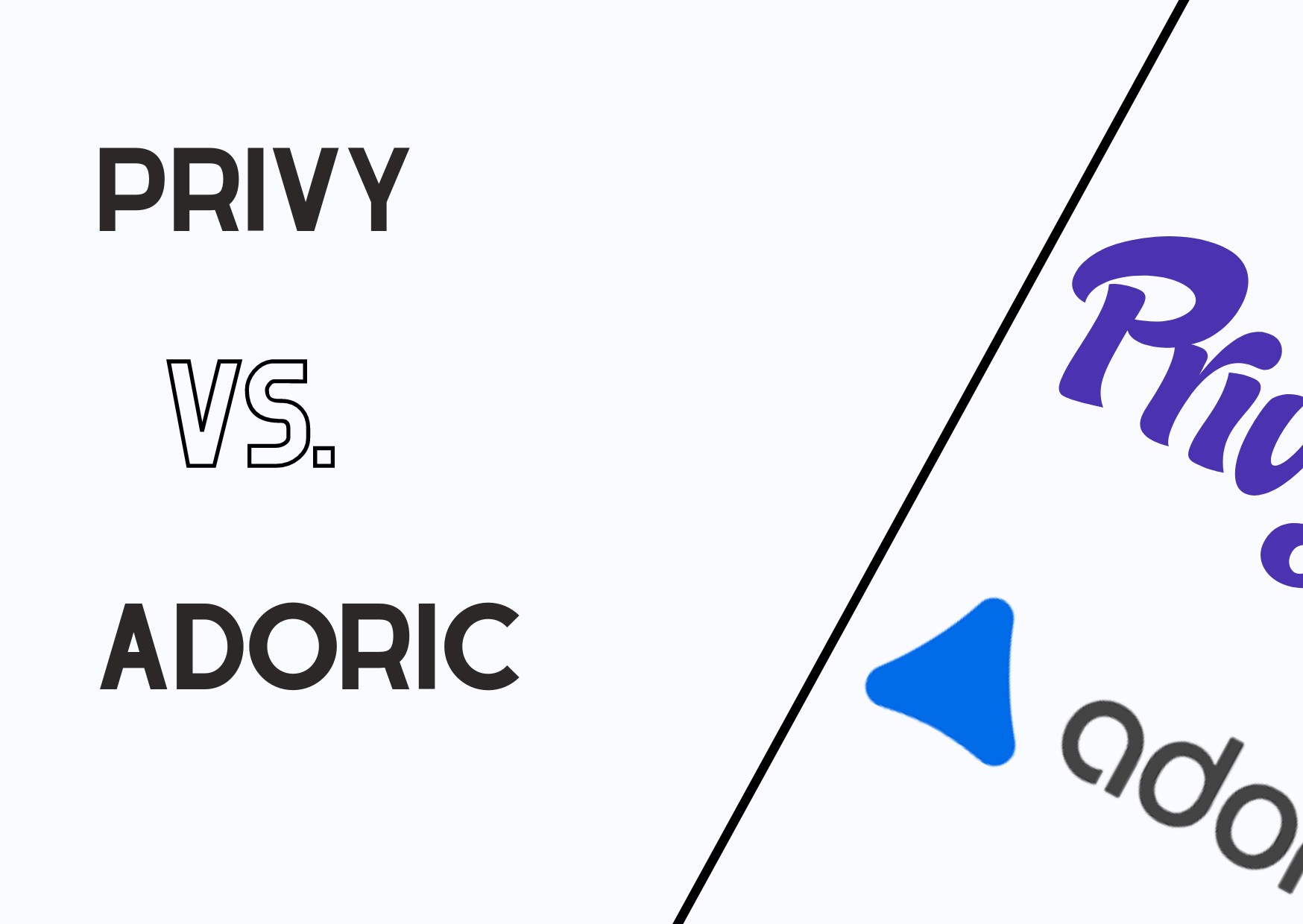As website conversion optimization tools, Privy and Adoric are well-regarded in the industry for their ability to increase conversions and drive sales.
Both platforms offer a range of customizable templates, advanced targeting options, and analytics tools to help businesses optimize their campaigns and achieve their goals.
However, as with any product, there are also some notable differences between the two.
In this comparison, we will delve into the specific features and capabilities of Privy and Adoric to help you determine which platform may be the best fit for your business.

Similarities
Both platforms offer a wide range of features that allow businesses to create and customize interactive elements, such as popup forms and floating bars, to elicit desired actions from website visitors.
Both platforms offer robust analytics tools to evaluate campaign performance and optimize conversion strategies.
Additionally, both Privy and Adoric offer customizable templates in a variety of layouts and advanced audience targeting options to deliver personalized messages to specific audiences at the appropriate time.
Both platforms also provide user behavior targeting options, helping businesses to reduce cart abandonment and increase conversions.
Integrations
Privy and Adoric are conversion optimization tools designed to help businesses increase conversions and boost sales. Both platforms offer a wide range of features, including customizable templates, targeting options, and analytics tools.
In terms of integrations, Privy offers integration with popular email marketing platforms such as MailChimp, Constant Contact, and Campaign Monitor. It also offers integration with e-commerce platforms such as Shopify and BigCommerce. Additionally, Privy has an API that allows for integration with other platforms and tools.
Adoric, on the other hand, offers integration with major email service providers such as Mailchimp, AWeber, and GetResponse. It also integrates with e-commerce platforms such as Shopify, BigCommerce, and Magento. Adoric also integrates with web analytics tools such as Google Analytics and Mixpanel.
Privy and Adoric offer a wide range of integrations, but they differ in the platforms and tools they integrate with. Privy focuses more on email marketing integration, while Adoric offers more integrations with e-commerce platforms and web analytics tools.
Features
One of the main differences between Privy and Adoric is the type of campaigns they offer. Privy primarily focuses on email capture campaigns, while Adoric offers a wider range of campaign types, such as pop-ups, floating bars, and in-page content. This allows Adoric to cater to a broader range of business needs, from growing email lists to promoting products and increasing user engagement.
Another key difference is the targeting options available on each platform. Privy offers targeting options based on user behavior, such as exit-intent and time on site, as well as targeting based on location and device.
Adoric, on the other hand, offers a more advanced set of targeting options, such as click targeting, event targeting, and page scroll targeting. This allows Adoric to deliver highly targeted and relevant messages to users based on their interactions with the website.
In terms of integrations, Privy offers integrations with a variety of email marketing platforms, such as Mailchimp, Constant Contact, and AWeber, as well as e-commerce platforms like Shopify and BigCommerce.
Adoric also offers integrations with major email service providers, and it also offers integration with a variety of e-commerce platforms, but it also offers integration with webhooks and Zapier, which allows businesses to connect Adoric to a wide range of other apps and services.
In conclusion, while both Privy and Adoric are powerful conversion optimization tools, they each offer different features and targeting options. Privy is primarily focused on email capture campaigns and targeting options based on user behavior, while Adoric offers a wider range of campaign types and advanced targeting options.
Pricing
Regarding pricing, Privy and Adoric offer a range of plans to suit the needs of different businesses. Privy offers a free plan as well as paid plans that vary in price and features. Adoric also offers a free plan and several paid plans that differ in price and features.
Privy's pricing plans are based on the number of monthly website visitors, with a free plan for up to 2,500 visitors per month and paid plans starting at $24 per month for up to 10,000 visitors. The plans include a range of features such as A/B testing, targeted campaigns, and custom branding, with higher-tier plans allowing for more visitors and additional features.
Adoric's pricing plans, on the other hand, are based on the number of monthly website visitors and the features required. The free plan is suitable for small businesses with low website traffic. The paid plans offer additional features such as A/B testing, targeted campaigns, and custom branding, with higher-tier plans allowing for more visitors and advanced features.
In terms of pricing, Privy may be more cost-effective for businesses with low website traffic, while Adoric offers a wider range of features and advanced targeting options. Both platforms offer a free plan, which allows businesses to test the platform and its features before committing to a paid plan.
Which One is the Best: Privy or Adoric?
It is difficult to determine which tool, Privy or Adoric, is the best for businesses as it ultimately depends on the specific needs and goals of the company.
Privy primarily focuses on email capture and lead generation, while Adoric offers a wider range of features, such as exit-intent targeting and interactive elements like games.
Ultimately, it would be wise for businesses to thoroughly evaluate both tools and determine which one aligns better with their unique requirements.
Overall
In conclusion, Privy and Adoric are powerful conversion optimization tools that offer a range of features to help businesses increase conversions and boost sales.
Both platforms offer customizable templates, advanced targeting options, and analytics tools to evaluate campaign performance. However, each platform has its own unique features and capabilities that may be better suited to different types of businesses and websites.
Ultimately, it's up to the business to weigh the pros and cons and decide which platform will best help them achieve their objectives.


